As I mingled with the crowd at a Wednesday night bike gathering in Venice, California, my helmet hung uncomfortably in my right hand. At any moment, one of the interesting people I was talking to would ask what I rode in on, at which point I would have to explain the vehicle I had parked a block away, which was probably earning a ticket for an expired meter. Inevitably, someone asked, and I answered: Polaris Slingshot.
“Wait, what is that? The vintage-looking things?”

Someone else: “No, that’s the Morgan 3 Wheeler or the Vanderhall.”
A bystander, from a few feet away: “It’s those three-wheeled things all the tourists rent and drive annoyingly in traffic.”
The original question-asker: “Oh yeah! Those things are weird.”
I couldn’t argue. I was a tourist, renting a Slingshot, and it was kind of weird.
Nature tends to favour even numbers. We humans are no exception, from the television volume to the wheels on our vehicles. Four wheels? That’s a car or truck – we love those. Two wheels? Motorcycle, cool. Eighteen wheels? Roll on, Snowman.
But three wheels? That’s literally an odd one. Since five- and seven-wheeled vehicles just haven’t taken off, trikes take up the flag for automotive oddities. Is the peculiar wheel count a detriment to those vehicles? Rather than sit and philosophise, Hagerty editor-at-large Aaron Robinson and I took to the streets in and around Los Angeles to spend three days with two of the most polarising vehicles on the road today: The Morgan Super 3 and the Polaris Slingshot.

The Morgan Super 3 has a longer history and more charm. This 2023 model traces its lineage back over a century to 1909, when Henry Fredrick Stanley Morgan first put a vehicle of his own design into production. The design was born from thrift. After learning that cyclecars were not taxed the same as motorcycles, his plan to construct a bike utilizing the 7-hp Peugeot twin-cylinder morphed into a plan to build a trike, with two wheels up front and a backbone frame to support the single rear wheel.
It was weird. The V-twin was mounted up front with a slim, lightweight body behind it. Decorated English fighter pilot Albert Ball once remarked that driving his Morgan was the closest he could get to flying without leaving the ground. Morgan’s 3 Wheeler has gone through a handful of iterations, including one built from 2012 to 2020 that featured an S&S air-cooled V-twin out front to fit the tradition.
The latest version of the Morgan is the Super 3, and it changes the form a bit by tucking a Ford 1.5-litre three-cylinder engine behind a small, semi-circle grille and under the low and sleek hood that establishes the very aeronautical shape of the body. A Mazda-sourced five-speed manual transmits the engine power to the rear wheel using a bevel gear and belt drive. The whole shape would be even more fuselage-like if it weren’t for the sideboards attached to each side behind the front wheels that are designed to hold luggage. Even your spare socks get the open-air experience.
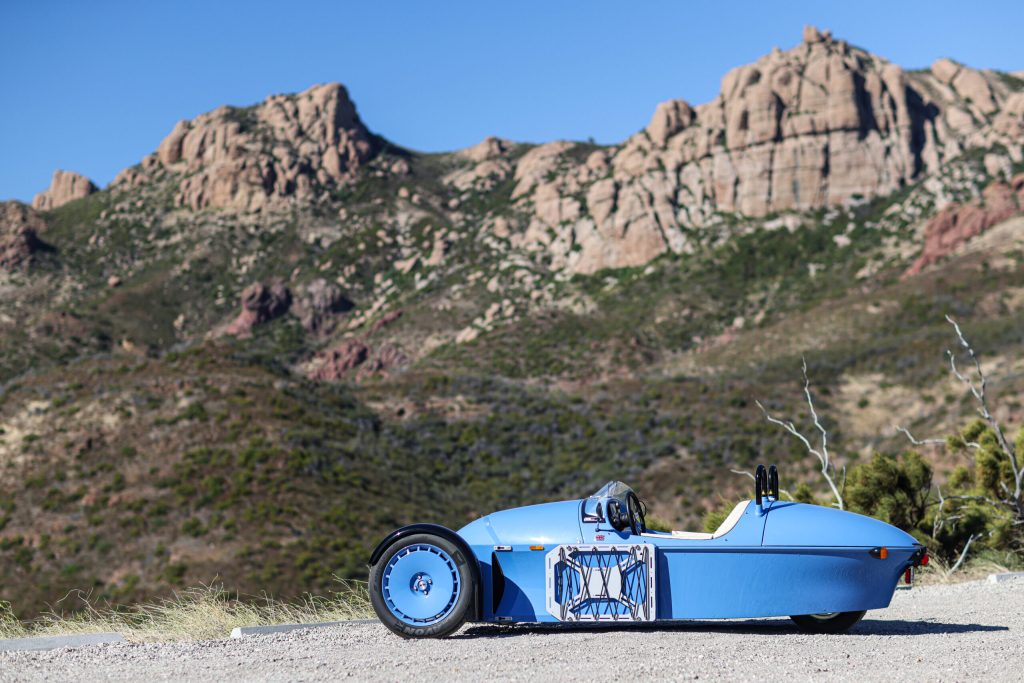
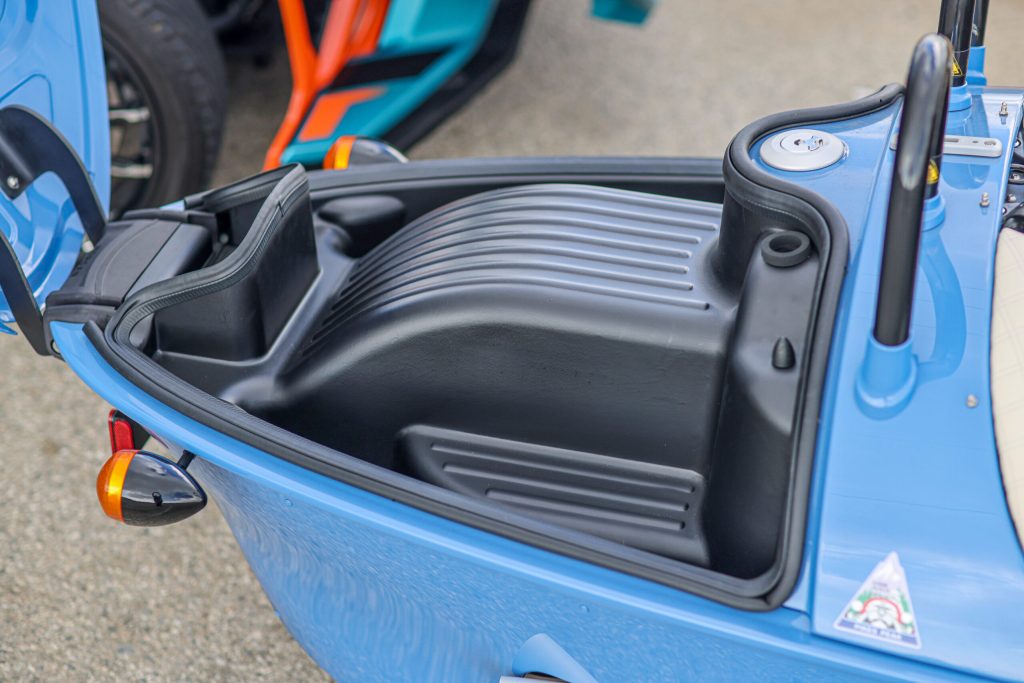
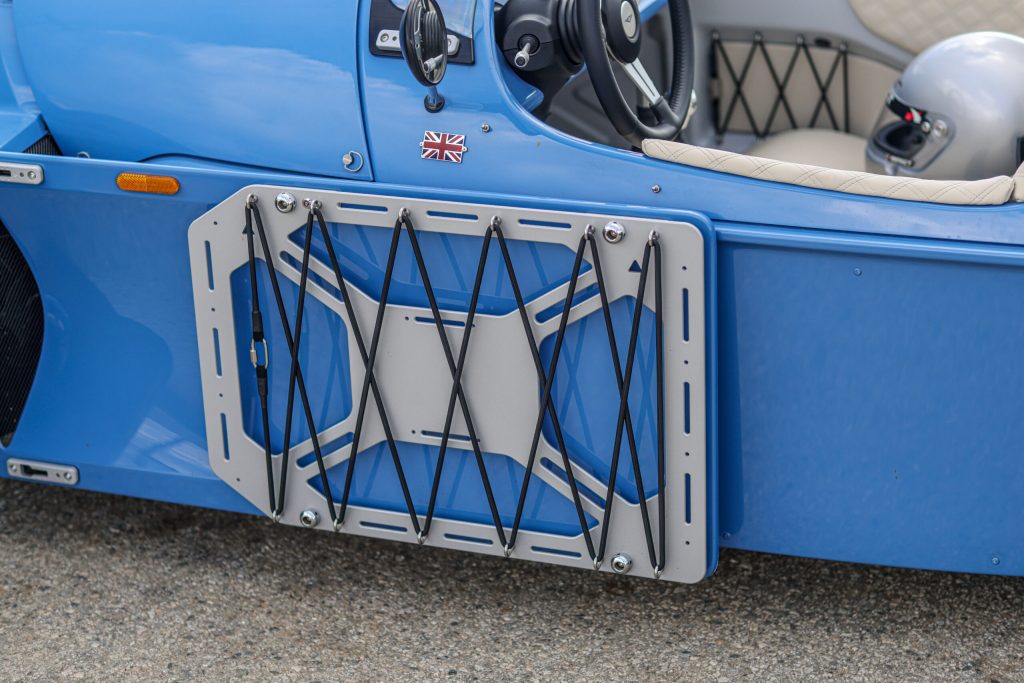
That aircraft theme is carried to the interior where two simple gauges sit front and centre with a few weatherproof switches for the accessories underneath. A small digital gauge pod sits atop the steering column. It can be used for GPS navigation with the help of Beeline, an aftermarket motorcycle-oriented navigation system. The diamond-stitch interior panels are thinly padded, which makes getting into the driver’s seat a little easier by offering steadier footing climbing in. Sliding down into the driving position requires limber joints, especially because the steering wheel will bend if used as a grabbing point. Once you are in place, it becomes clear there is not much to do besides drive. You don’t get to a 635 kg curb weight by filling a car with trinkets and farkles. Instead, flip the switch cover between the gauge pods and press the start button twice to wake the 118 bhp three-cylinder. Shift to first, and away you go.
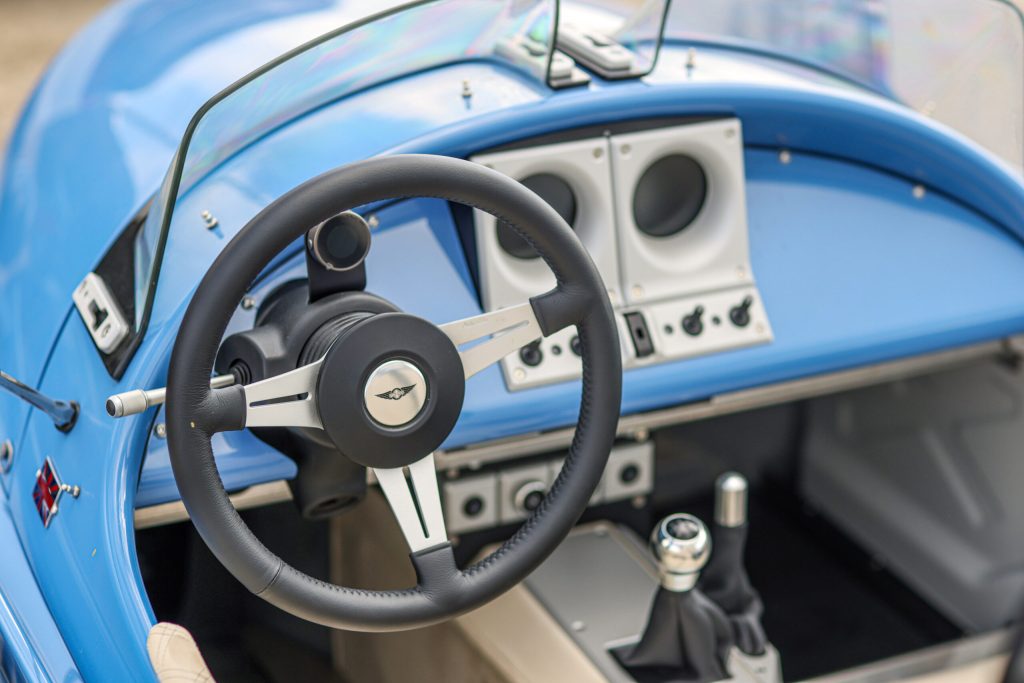
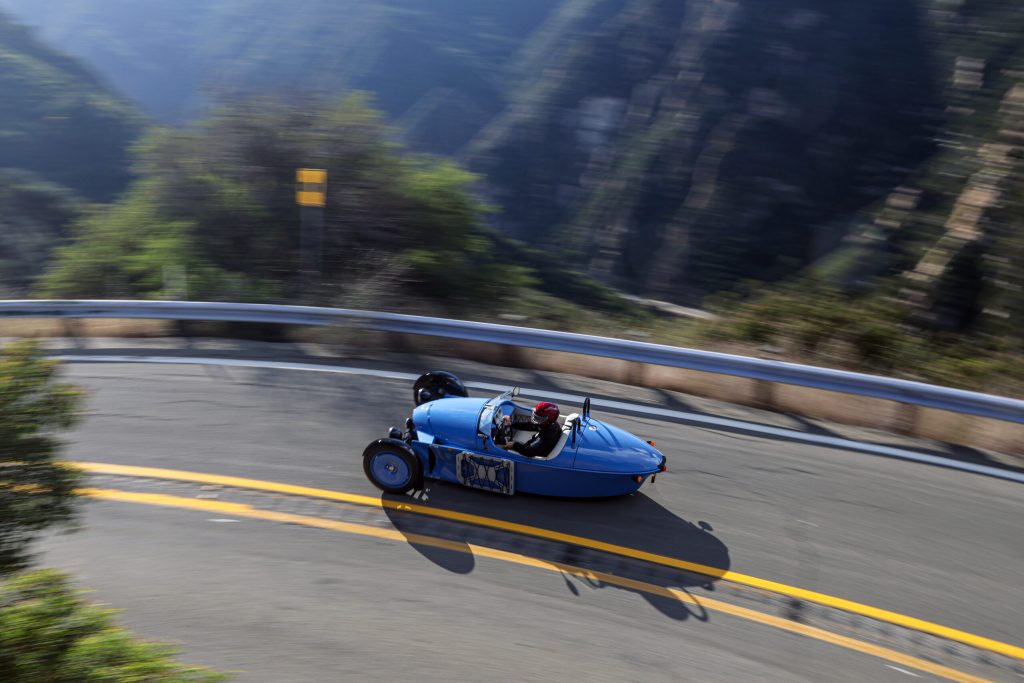
It shakes a little at idle. The steering wheel is small and inputs all feel quick no matter how many times I tell myself “slow hands” while diving through corners in the Malibu canyons. Within the narrow body shape, the pedal box is cramped. There is no room for a dead pedal, leaving me to try and brace myself against the floor and the sideboard, which drives my left knee into the metal eyelets that create a kitschy bungee-cord storage system. Maybe I just need a pair of driving gloves to wedge in there. It would fit the aesthetic, but a seemingly better solution is for the car to gain an inch at nearly every measurable point. Interior, exterior, and suspension travel all would benefit from a little more space or travel.
Since the Morgan is registered as a motorcycle, helmet laws do apply depending on your jurisdiction, and while behind the wheel we often prefer the additional insulation a helmet provides. The small windshield bumps the current of air up (but not completely overtop) the occupants, and the wind buffeting we experience is just like what we feel in a motorcycle. The H-pattern five-speed hails from the NC-generation (2005–2015) Mazda MX-5 and makes freeway entry or just motoring about engaging and fun. Expect attention everywhere you go, but understand that attention meets you from a thinly padded, narrow, and non-adjustable seat that gives a perfect angle to inspect the inner fenders of a stock full-sized truck.
The Morgan has a certain simplistic charm that is hard to find in a modern car. There is nothing going on inside the Super 3 that keeps a driver or passenger from paying more attention to what is going on outside the sheetmetal bathtub; this is a vehicle that allows you to focus more on the experience of the drive rather than the destination. That said, handling is best described as quirky: I spent many of my weekends last year racing motorcycles and have enough track time in a car to know the Morgan was encouraging me to back off, rather than to push quicker and drive it more aggressively. Most drivers will be wise to slow down and take in the scenery.
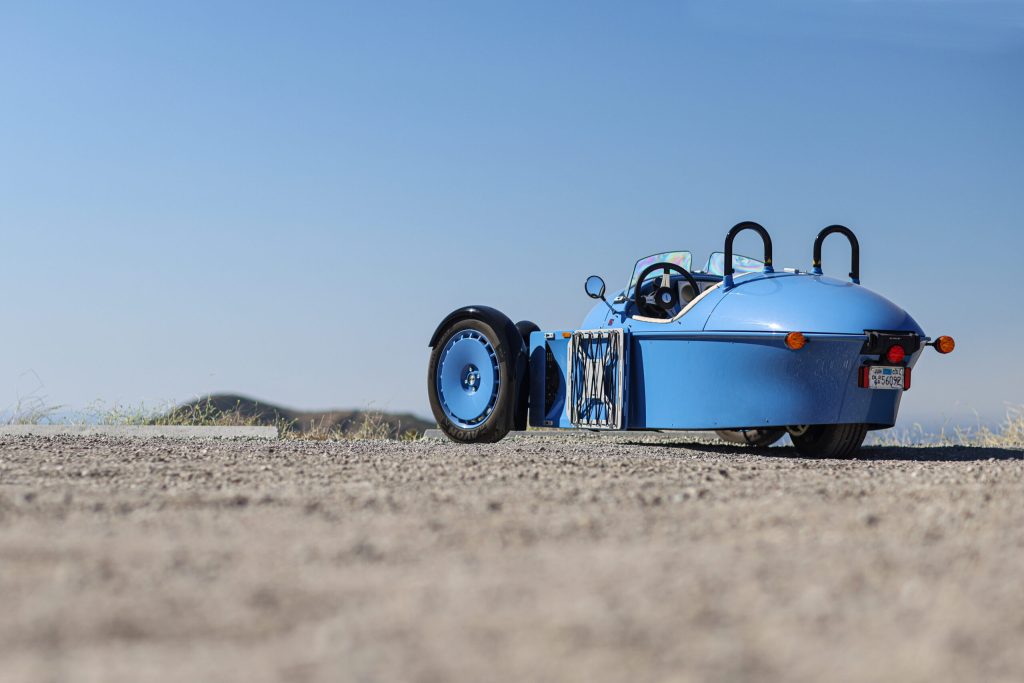
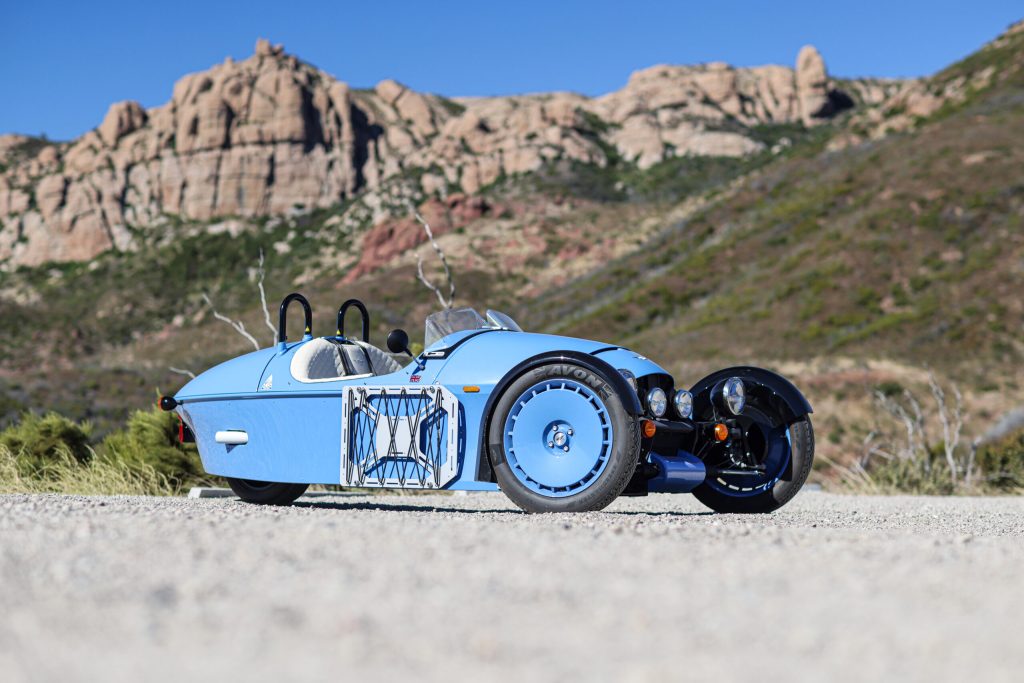
If both the Morgan and the Polaris are attempting to prove that 4 > 3 < 2, Morgan is a gray-haired math professor who still scrawls his proof on chalkboards and, after a century of trying, uses roughly the same method. The Polaris Slingshot is the newcomer, the rough guy from Southie who wrote on the chalkboard one night when he was supposed to be cleaning.
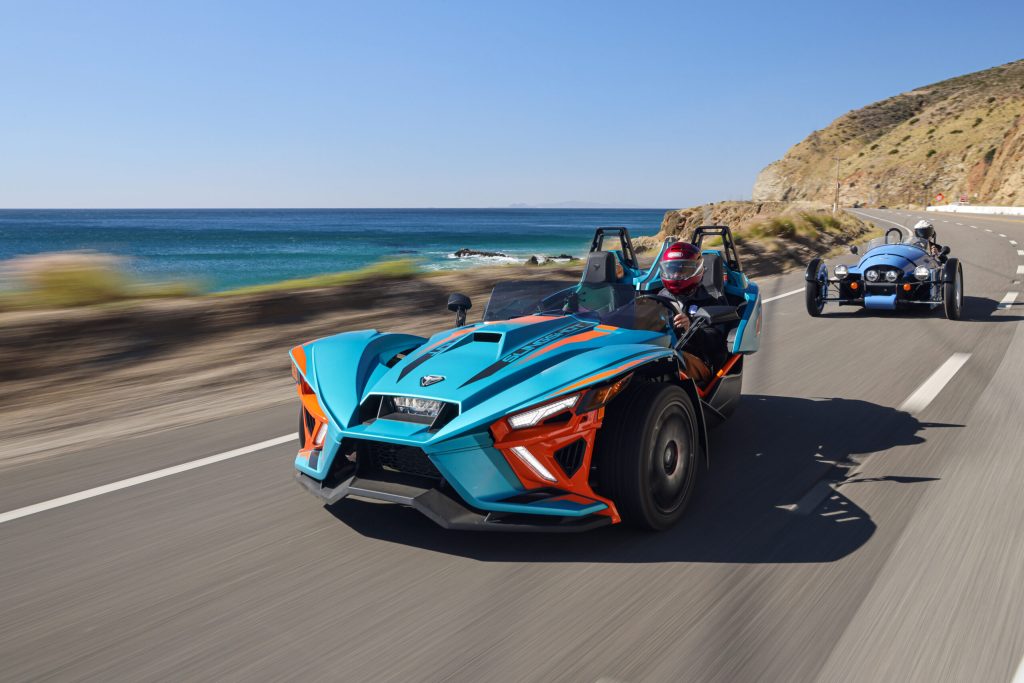
While Morgan is a small British company with aeronautical roots dedicated to keeping old-world craft alive, Polaris is a relatively young US firm that got its start with snowmobiles in the 1950s. It later expanded into the side-by-side market, and also the boat and motorcycle market, by acquiring and reviving brands on the brink of collapse. The Slingshot has been sold since 2009 and has experienced few changes in those 14 years. The largest is the switch from a Chevrolet-sourced Ecotec inline-four to an in-house, Polaris-sourced Prostar 2.0-litre inline-four. This engine is part of what makes the Slingshot charming. It pulls strong from low rpm and continues to sweep smoothly up the tachometer to a 10,000-rpm redline. Said engine is mated to the same Miata transmission as you’d find in the Morgan.
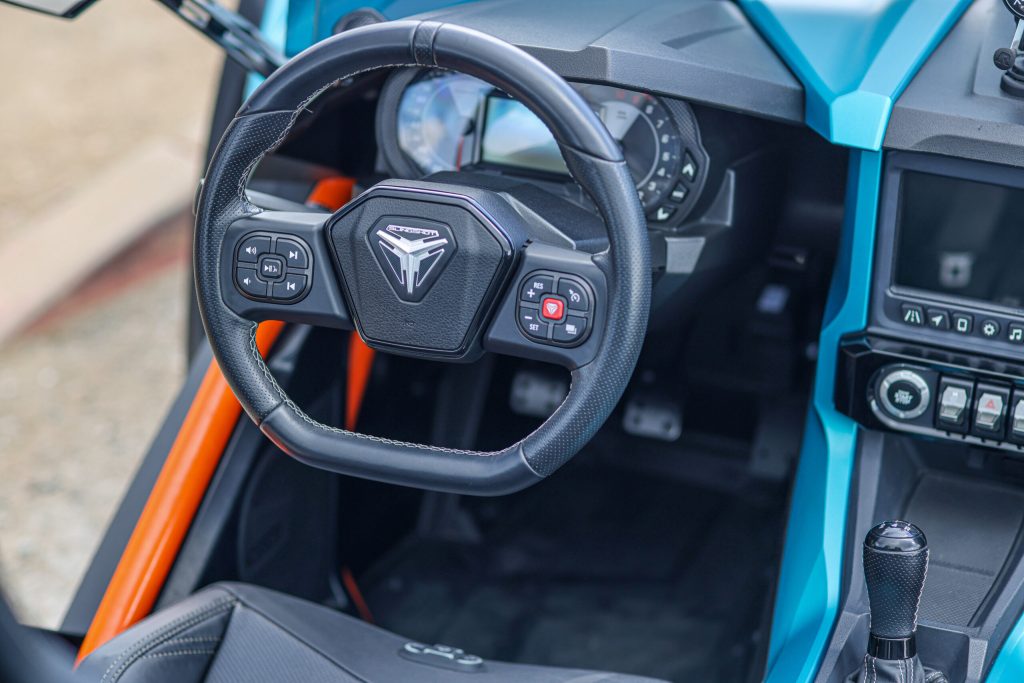
The Slingshot looks at things differently and adds new variables. The angular front end is busy, but that is the nature of the beast when hanging double-wishbone front suspension out in the air. The 205-series 17-inch front tyres look massive when parked next to the Morgan’s 195/65R-15 all-seasons. In all but one of the five color schemes available from Polaris, the tubular chassis becomes a visual highlight along with the door bars and roll hoops, which are painted in contrasting colors: red, orange, purple, and lime green. The accent colour extends to the single-sided swingarm that hangs proudly off the back and houses the belt that transfers power to the meaty, 18-inch rear wheel.
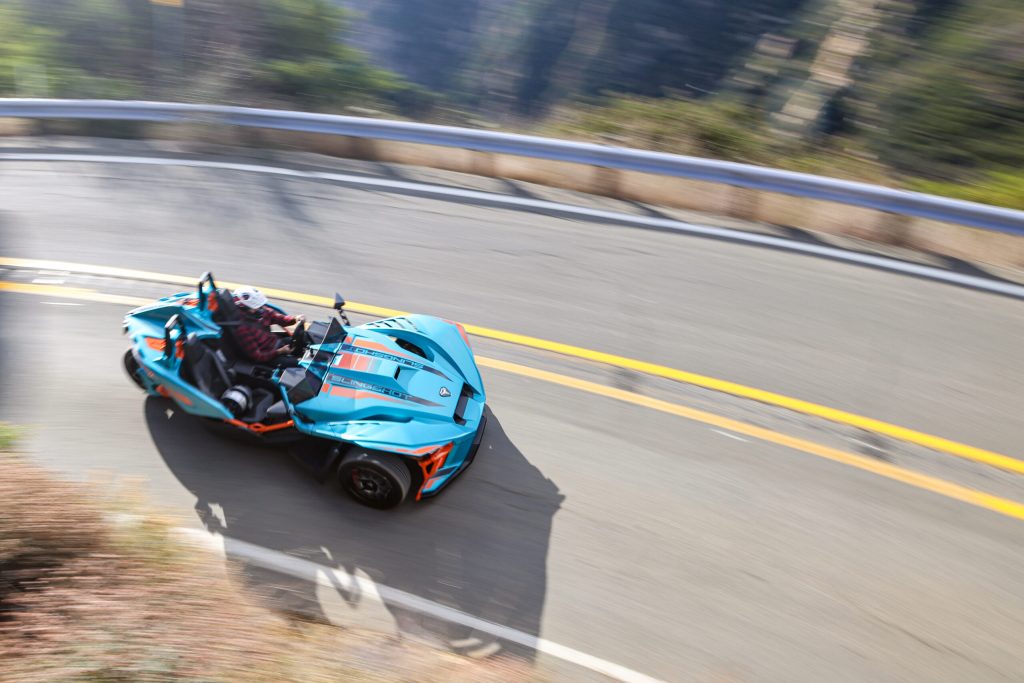
Though the Polaris has far more grip than the Morgan, that larger rear tyre still struggles to plant the 200 horses. Leaving one tyre track after a burnout was the subject of many a joke during our test, but the Slingshot is no laughing matter. Compared with the Morgan, it is relatively luxurious: There is power steering hidden under the clamshell, which was welcome when swapping from one to the other. The “interior” has simple vinyl bucket seats with good bolstering that feature both heating and cooling for the back and bottom. It’s clear that Polaris has powersports experience because the fit and finish is nice despite everything needing to be some form of plastic to handle the exposure that comes when you ditch a roof. Close your eyes while sitting in the driver’s seat of the Slingshot, and it all feels like a car. Open your eyes, though, and the sounds and smells of the world come through stronger than ever. Even with a helmet on the eau de perfum of the 405 Interstate cannot be ignored. The lack of insulation is a trade-off: Once out of traffic, the sounds and smells of the wild canyons permeate your senses and create an escape. The front wheels are out in the wind and so are you.
While similar in concept, the Slingshot and the Super 3 produce very different responses for me. I drove the borderline-gaudy Polaris for hundreds of miles during the week I was out West, but always with a slight tinge of happiness that I was wearing a helmet. I didn’t really want to be seen in it, despite enjoying the driving experience. The Morgan was the polar opposite. An extra trip around the parking lot to look for a “better” spot? No big deal – the Morgan turns heads without the stigma. The Super 3 is a novelty designed to be interesting and succeeds at doing so. The Slingshot is a novelty that also functions well and suffers for its relative practicality: It’s seen on the road far more often, and passersby have opinions hardened by factors that have less to do with the Slingshot and more to do with the people who typically drive it.
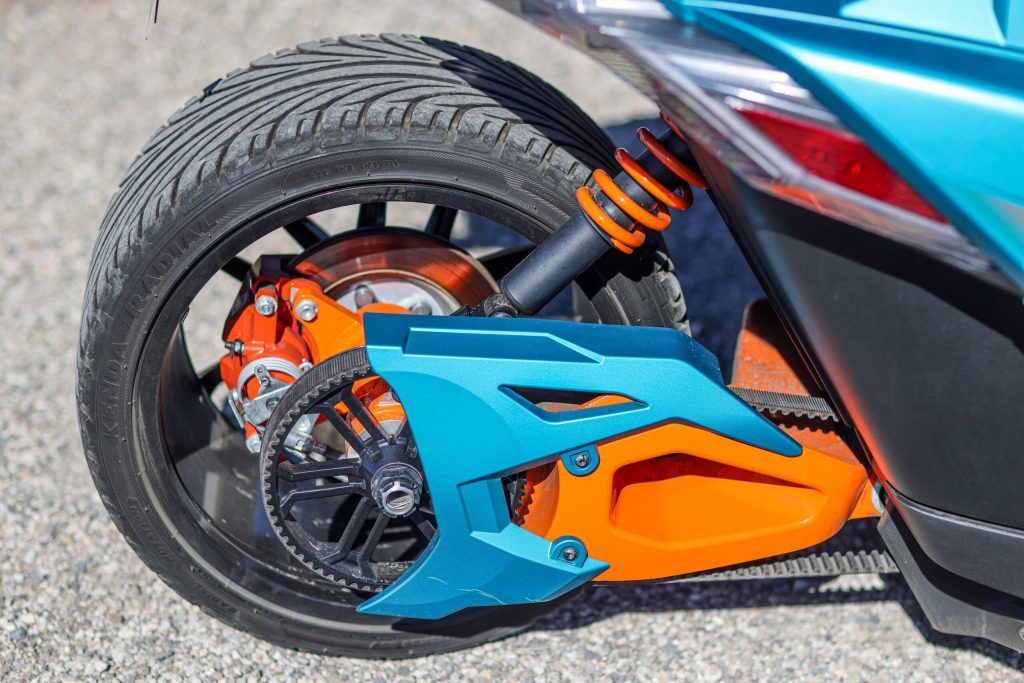
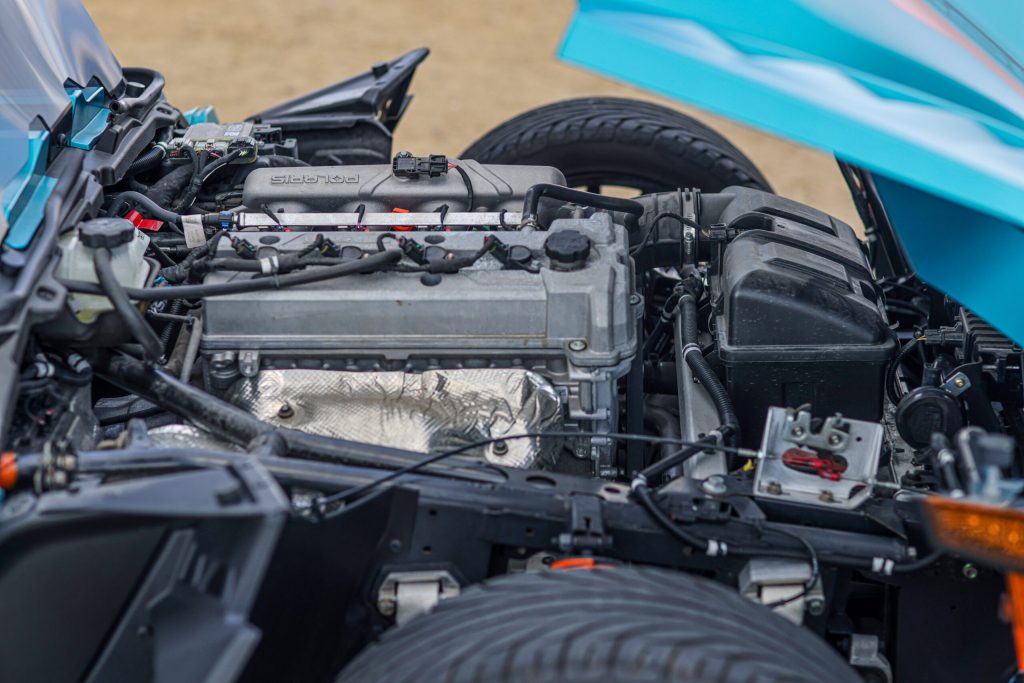
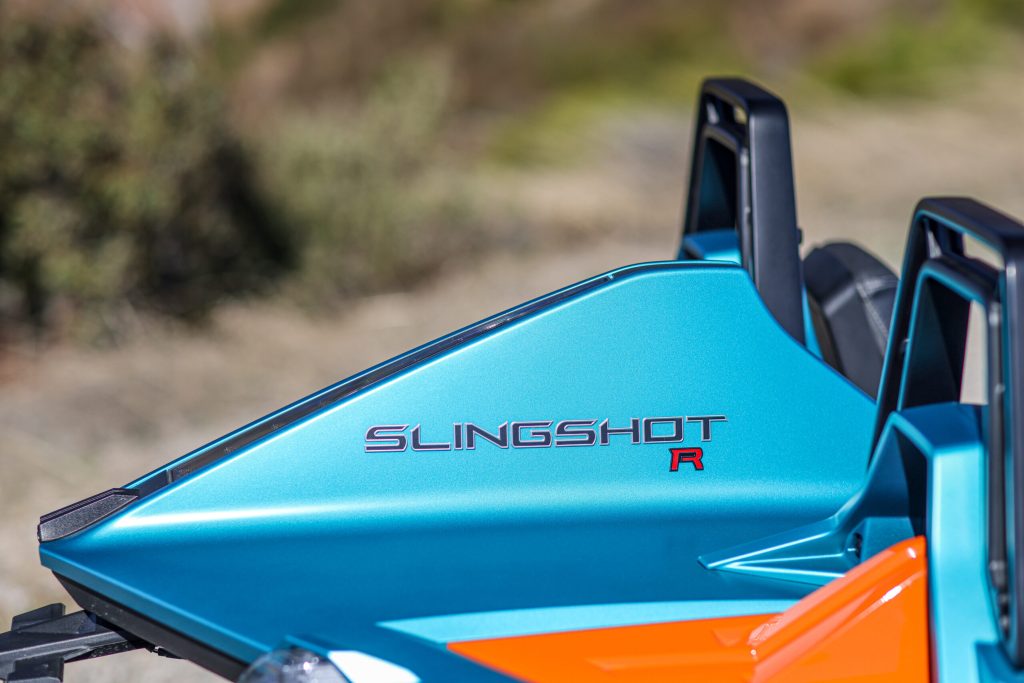
The history of three-wheel vehicles has pretty much always been centered around either functionality or experience. The first self-propelled vehicle had three wheels, in fact, not four: Around 1770, Nicolas-Joseph Cugnot grafted a steam boiler powering a single wheel onto a simple cart that would be defined in modern terms as a powered trailer. Even with those low expectations, it failed to perform tasks better than un-powered four-wheel or two-wheel carts.
Over 250 years later, trikes are not solutions to transportation problems; they are lifestyle choices. As extensions of their owner’s personalities, they are no different from antique iron. Could you live every day with the Morgan or the Polaris as your sole vehicle? Sure, if you’re okay with carrying a helmet with you everywhere, but let’s not pretend daily use was ever part of the design brief for these machines. They are novelties, and the only problem they solve is forcing a driver to be more aware of what’s on the road.
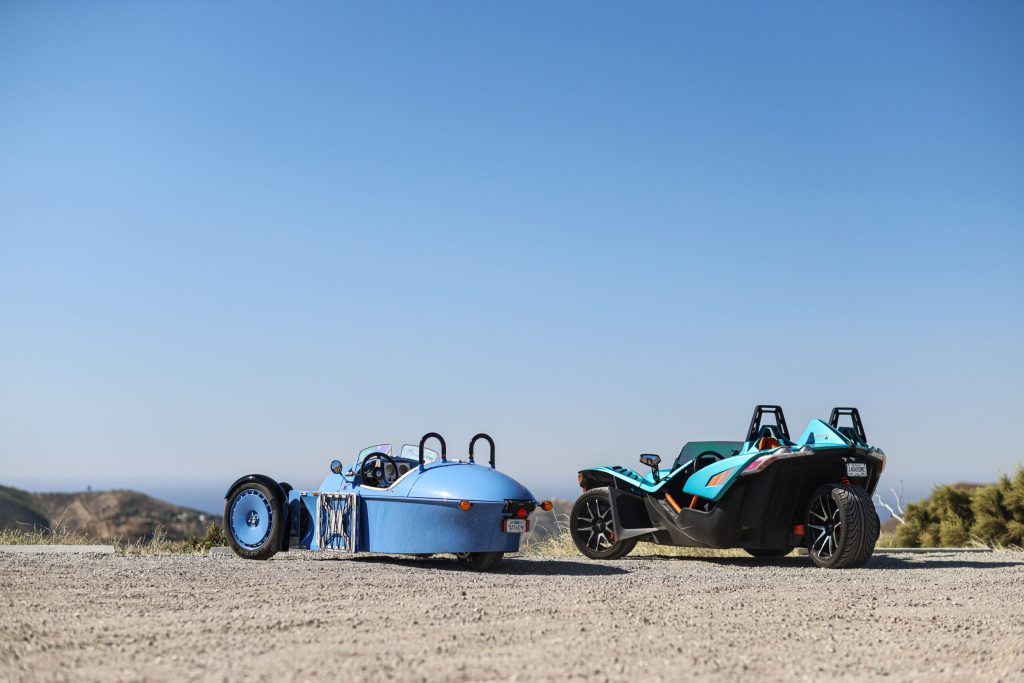
Only after driving these trikes can I say that not everything strange is bad. As a person who buys vehicles for the experience they can provide, I would consider either of these if a spot in my garage opened up. You might have experienced everything on two or four wheels, but the Morgan and the Polaris are different. They are like motorcycles, but somehow not consolation prizes compared with riding two wheels. They provide the openness of a motorcycle but are so much less busy to drive. Each is unique; it flies in the face of convention and is coveted or shunned for doing so.
Proving whether two, three, or four is the correct number of wheels for a vehicle will only drive you mad. Why be mad when you could drive either of these three-wheelers with a grin on your face? The only axiom that matters is driving = fun.
Specs: 2023 Polaris Slingshot R
Price: From £27,325 (in California)
Powertrain: 2-litre inline four-cylinder, five-speed manual transmission
Horsepower: 200 bhp @ 8250 rpm
Torque: 144 lb-ft @ 6500 rpm
Layout: rear-wheel-drive, no-door, two-passenger roadster
0–60 mph: 5.3 seconds
Specs: Morgan Super 3
Price: From £43,165
Powertrain: 1.5-litre three-cylinder, five-speed manual transmission
Horsepower: 118 bhp @ 6500 rpm
Torque: 110 lb-ft @ 4500 rpm
Layout: rear-wheel-drive, no-door, two-passenger roadster
0–60 mph: 7 seconds








